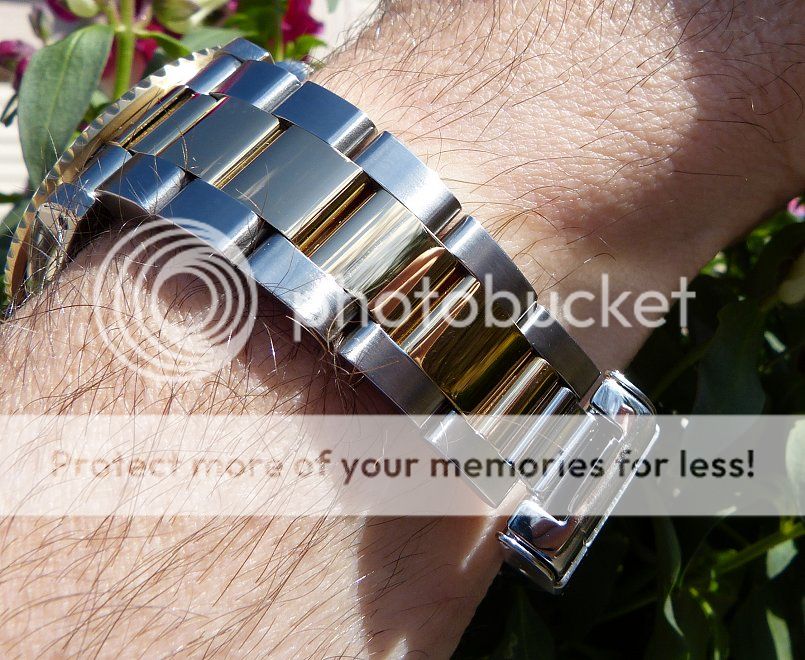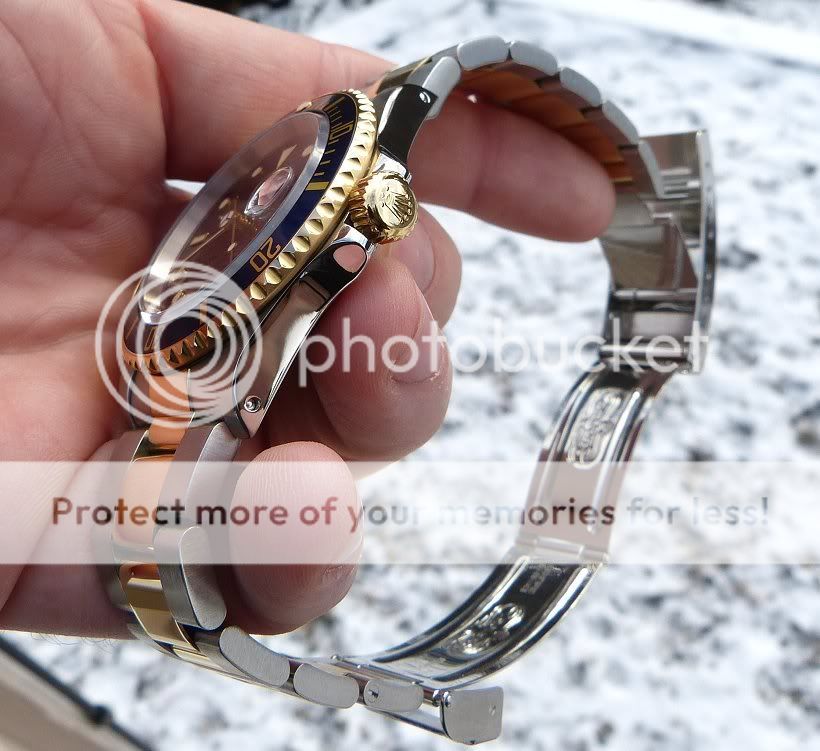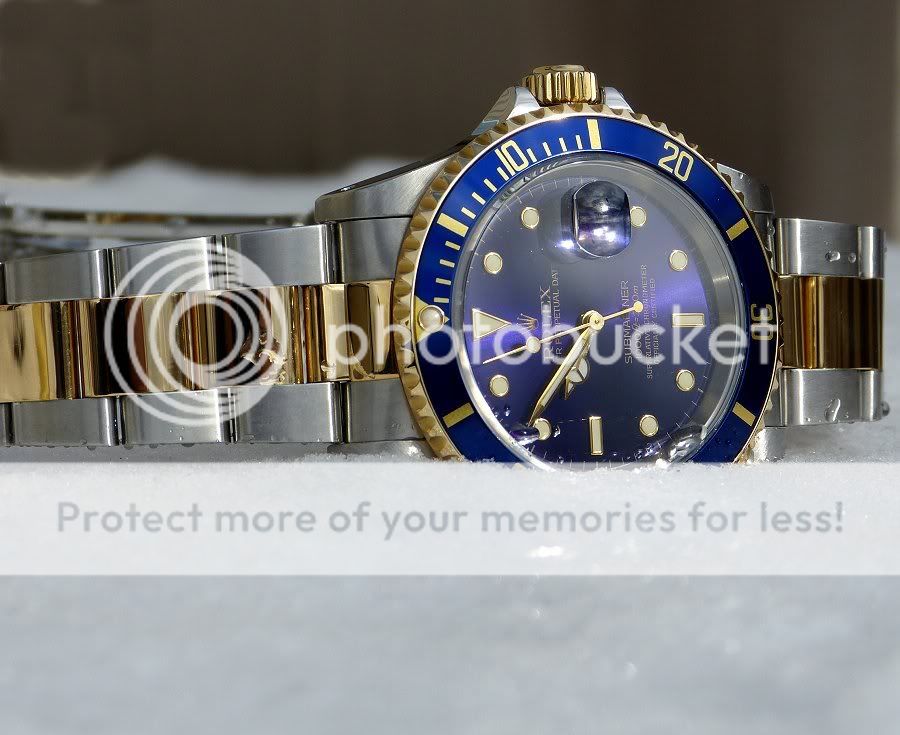
 |
ROLEXROLEXROLEXROLEXROLEXROLEX
 ROLEXROLEXROLEXROLEXROLEXROLEX
ROLEXROLEXROLEXROLEXROLEXROLEX
|
|
#31 | |
|
Banned
Join Date: Jul 2017
Real Name: Jaime
Location: Here
Posts: 5,606
|
Quote:

|
|
|
|

|
|
|
#32 | |
|
Banned
Join Date: Apr 2019
Real Name: Adam
Location: Canada
Watch: DJ41
Posts: 517
|
Quote:
I personally refinished a bad scratch I had on my previous DJ that drove me nuts. I removed it and brought it back to new. So close in fact my AD could not tell one bit under the lights and all the brand new watches. Again, to each their own. |
|
|
|

|
|
|
#33 |
|
Banned
Join Date: Apr 2019
Real Name: Adam
Location: Canada
Watch: DJ41
Posts: 517
|
Here you guys go. A couple pics of my refinish work. Completely restored to brand new.
  Sent from my iPhone using Tapatalk |
|
|

|
|
|
#34 |
|
"TRF" Member
Join Date: Apr 2019
Real Name: Zeus
Location: London
Watch: Ocean 2000
Posts: 975
|
Thanks for information sharing, but honestly just leave those scratches be, otherwise obsessing about it will only diminish your overall experience of owning the watch in the long run.
__________________
Lange (ref. Saxonia Thin RG); Vacheron C. (ref. 3110v); Ressence (ref. Type 8); Rolex Explorer (ref. 124270); Porsche Design IWC (ref. Ocean 2000); Seiko (ref. SLA039) |
|
|

|
|
|
#35 |
|
"TRF" Member
Join Date: Dec 2017
Location: Ireland
Posts: 322
|
|
|
|

|
|
|
#36 |
|
Banned
Join Date: Jul 2019
Location: Belgium/ USA now
Watch: what's on my wrist
Posts: 575
|
Nothing wrong with this tread, but Padi is spot on !! Snit, show your shiny over poised watch in one month. If you wear everyday. Polishing yourself every time there a mark like a dog chasing its tail lol
|
|
|

|
|
|
#37 |
|
"TRF" Member
Join Date: Feb 2011
Location: Pothole
Watch: Tudor Black Bay
Posts: 890
|
I know. I have a few watches and most aren’t ever touched. This was a demonic impulse I could not control. So yeah. I understand all your advice but as I mentioned, it kinda happened.
__________________
Tudor Black Bay Red Rose ETA Rolex 214270 Explorer 1 Tudor BB 41 Blue Dial Doxa Sub 200, SKX009 Aquastar Deepstar |
|
|

|
|
|
#38 | |
|
Banned
Join Date: Apr 2019
Real Name: Adam
Location: Canada
Watch: DJ41
Posts: 517
|
Quote:
Not exactly using machines here. Donít be such a negative hater. |
|
|
|

|
|
|
#39 |
|
Banned
Join Date: Apr 2019
Real Name: Adam
Location: Canada
Watch: DJ41
Posts: 517
|
No no, just use a little bit when your cloth seems to dry out. For better results constantly use new pieces of cap cod once black. When you are finishing up and wanting to get the swirls out use a new piece of cape cod and to softly.
|
|
|

|
|
|
#40 |
|
"TRF" Member
Join Date: Aug 2017
Real Name: Troy
Location: Houston, TX
Watch: 16710 GMT, BBR
Posts: 926
|
I think once you get enough scratches and they start to look evenly spread, it actually can make a watch look better

|
|
|

|
|
|
#41 |
|
2024 Pledge Member
Join Date: Dec 2009
Real Name: The Mystro ;)
Location: Central Pa.
Posts: 14,711
|
Making blanket Cape Cod statements is very short sighted.
I became a master with the Cape Cod cloth over 30 years. I wear my watches but they always look pristine to a certain level. I address scratches on a semi regular basis. You can’t take off too much metal and you won’t take any of the sharp lines off your watch with a Cape Cod cloth. At this point, I know what is normal hairlines and what are unacceptable scratches. Taking off scratches are like getting a haircut to me. It’s just something you must do to keep up a reasonable appearance. On the flip side I also get pristine watch money when I trade them on. Scratches are not beautiful in my eyes and are tolerated at best. There is certainly a philosophical reason to address scratches or just do nothing and let them accumulate. I don’t worry about them or freak out when they happen because I know I can address them which takes any new watch stress away. Knowledge is power and ignorance is fear. Perhaps that is why new watch owners are so paranoid about scratches because they don’t know how to address them and they don’t want to just “live with them”. This is a 17 year old Bluesy that has been on countless dives and was my every day (only) watch for over eight years. This watch never even had a routine service for its first 15 years of life. I addressed every scratch as it happened on this watch over the years with a Cape Cod system. The lines on this watch from the bracelet, clasp and case are as sharp as it was from the day it was new. At its routine 15 year service, Rikki had to polish very little and mentioned how well I kept the watch up as it makes his job easier. When a skilled and respected watch maker praises your watch maintenance routine, I am going to say it is good empirical data that this method should be kept up. Learning how to use a Cape Cod cloth isn’t that complicated but if you are freaked out with the idea, you can always practice on your silverware and move up to a watch. Knowing you don’t have to live with a door jam smack might let some relax and enjoy their watch even more. Anyone want to show me I did any damage with a cape cod cloth using it for almost a decade?     
|
|
|

|
|
|
#42 |
|
2024 ROLEX DATE-JUST41 Pledge Member
Join Date: Oct 2008
Real Name: Sink-O!
Location: a praire in AZ
Watch: ROLEX-less atm...
Posts: 14,007
|
Quote:
 
__________________
 *Positive Waves Baby* Lug Hole Loyalist / Chamfer Line Inspector INFORTHE WIN 274
|
|
|

|
|
|
#43 |
|
Banned
Join Date: Apr 2019
Real Name: Adam
Location: Canada
Watch: DJ41
Posts: 517
|
Quote:
Good value add to this thread. Nice watch!!!!! |
|
|

|
|
|
#44 |
|
"TRF" Member
Join Date: Dec 2017
Location: Ireland
Posts: 322
|
That is amazing,
Could you describe your method of using cape cod cloth ? Thanks Quote:
|
|
|

|
|
|
#45 |
|
"TRF" Member
Join Date: Feb 2016
Location: US
Posts: 422
|
|
|
|

|
|
|
#46 |
|
Banned
Join Date: Apr 2019
Real Name: Adam
Location: Canada
Watch: DJ41
Posts: 517
|
|
|
|

|
|
|
#47 | |
|
2024 Pledge Member
Join Date: Dec 2009
Real Name: The Mystro ;)
Location: Central Pa.
Posts: 14,711
|
Quote:
The best advice is to know your metal textures and finishes. In other words, never address different finishes at the same time. With most Rolex models you have polished and brushed finishes. When working on one finish like polished, you must tape off the brushed finish if you are getting anywhere near that area. Satin or sand blasted finishes I wont touch. That would be a YM bezel and some Sinn watches. It goes without saying no motorized polishing machines ever. That includes a dremel. Dremels are what can destroy a factory line. Most all of the horrible polishing jobs that scare the newbies about watch polishing were done with a dremel. What we are doing isn't in the same zip code of what a dremel can do. A scotchbrite pad will do your brushed finishes and Cape Cod with different polishing cloths for the other polished surfaces. Its a long detailed process but always use long smooth strokes when polishing. Never short fast back and forth motions on either polished or brushed finishes. Never apply a lot of pressure as it will only leave you with crappy results. Polish in the direction of the metal area in its organic shape. This means never polish directly on a sharp case line. Very Zen like but work in the directions of the lines of the watch. If its the clasp then long full length strokes and never side to side. If its the side of the polished case, then your strokes must start at the tip of the lug and all the way to the other lug not stopping the motion. Short choppy motions are what ruins a good polish. Keep your work area surgically clean as well as your cloths and materials. Cant stress this enough. Any contamination to your finishing cloths will leave hairline scratches so keep each cloth in their own sealed ziplock bag. Shortcuts and rushing to remove a scratch is what leaves amature looking polishing. Use a loupe and/or magnification "reader" glasses. You need to see everything. Knowledge is power and you have to be able to diagnose exactly what kind of blemish you are looking at. Never go beyond your comfort level and that level can only be raised with experience. Sometimes its better to just reduce a scratch and stay in your comfort zone. When you get better, you can always revisit that mark again. I have developed all kinds of techniques and some unconventional products to use to polish a watch. Start with the basics and move up, in the end its only metal. I can go on and on and its impossible to learn all this on line. I am a PCA concours judge as well as competitor. The same principles with getting a paint finish to a show level is very similar to polishing a scratch out of a watch. Rushing and shortcuts are where mistakes are made. |
|
|
|

|
|
|
#48 | |
|
Banned
Join Date: Apr 2019
Real Name: Adam
Location: Canada
Watch: DJ41
Posts: 517
|
Quote:
Another great post by you. |
|
|
|

|
|
|
#49 |
|
"TRF" Member
Join Date: Jan 2014
Location: USA
Posts: 1,036
|
Quote:
Watch looks great. How often would you cape cod it. Care to make a post specifically about your methods etc and we can reference it? Maybe even a pictorial walk through. Sent from my iPhone using Tapatalk |
|
|

|
|
|
#50 | |
|
2024 Pledge Member
Join Date: Dec 2009
Real Name: The Mystro ;)
Location: Central Pa.
Posts: 14,711
|
Quote:
It depends. Over the years you learn all the little tricks how to “not” smack your watch. We had a forum master thread on this a few years back. I may not touch my watch up for months if it’s not needed. I may hit it every week if I dive with it often A tip to avoid scratches is you can’t wash it enough. Avoid wiping oil/smudges off on your cloths. I know it’s hard to look down and see them on your PCL but wait and wash it in the sink with soap. Using your cloths as a rag is doing more harm than good. A clean watch is a happy watch. This is a major way keeping your PCL clasp reasonably scratch free. Dawn dish soap diluted in a pump by the sink. |
|
|
|

|
|
|
#51 | |
|
Banned
Join Date: Jul 2017
Real Name: Jaime
Location: Here
Posts: 5,606
|
Quote:
|
|
|
|

|
|
|
#52 | |
|
"TRF" Member
Join Date: Dec 2017
Location: Ireland
Posts: 322
|
Thank you very much for that advice, I have printed this out and keep in my reference book.
Thanks again Quote:
|
|
|
|

|
|
|
#53 |
|
"TRF" Member
Join Date: May 2017
Real Name: Louis Nick Ric
Location: Michigan, USA
Watch: Blnr, Expll, Subs,
Posts: 10,160
|
Well said Mystro..
 Sent from my SM-G970U using Tapatalk |
|
|

|
|
|
#54 |
|
"TRF" Member
Join Date: Feb 2016
Location: US
Posts: 422
|
|
|
|

|
|
|
#55 |
|
Banned
Join Date: Apr 2019
Real Name: Adam
Location: Canada
Watch: DJ41
Posts: 517
|
Practice on different materials. I did. I would take a cap cod to a brand new watch any day with great results. Iím not living with crappy scratches on things I take pride in and enjoy. Same as I fixed the damaged drywall in my kitchen from a chair. Sent from my iPhone using Tapatalk |
|
|

|
|
|
#56 |
|
Banned
Join Date: Nov 2013
Real Name: Jim Smyth
Location: Florida
Watch: DD
Posts: 1,842
|
Cape Cod can only get you so far. With someone that practices you can get pretty good and make it a acceptable finish. But the only true way to get rid of those swirl marks is with a buffer in proper hands. Combine that with buffer wheel selections and proper rouges. Best bet is to leave it alone until service intervals.
|
|
|

|
|
|
#57 | |
|
Banned
Join Date: Apr 2019
Real Name: Adam
Location: Canada
Watch: DJ41
Posts: 517
|
Quote:
|
|
|
|

|
|
|
#58 | |
|
"TRF" Member
Join Date: Jun 2018
Location: Washington, DC
Posts: 92
|
Nice advice on how to take care of a watch. I haven't quite got the handle on cape cod cloth, but have had good luck with the 3m polishing sheets (and Bergeon block for brushed finishes). Seeing what you were able to do with the Cape Cod cloth, though, I may need to give it another go.
I purchased a cheap knockoff clasp and case off of eBay to practice on. Amazing what results you can get with a little practice. For those looking for more detailed instructions, this site is very helpful: https://www.minus4plus6.com/maintenance.php Quote:
|
|
|
|

|
|
|
#59 |
|
"TRF" Member
Join Date: Feb 2011
Location: England
Watch: 16710, 16628
Posts: 7,758
|
I'm not against taking care of the odd mark. To paint it as harmless good practice I disagree with. There are countless examples of once sharp centre link edges being worn down through people going at it. It's important that people understand that getting scratches out means taking off the surrounding area to the same depth. Remember that when you're maintaining your (hall of) mirror finish.
__________________
GMT II 16710 TRADITIONAL ( D- Serial #) ROLEXFANBOY P-Club Member #4 |
|
|

|
|
|
#60 | |
|
"TRF" Member
Join Date: May 2013
Real Name: Nick
Location: Las Vegas
Watch: 1601
Posts: 10,423
|
Quote:
Strong work  No visible signs of damage to me anyway. No visible signs of damage to me anyway.Some people prefer to let their watches age gracefully. Some people like to keep it ďpristine lookingĒ indefinitely. Enjoy your watches the way you want to. I have no problems with a watch getting its polish during routine service intervals. I just feel that itís too much effort and time to take different cloths, paste, coconut oil, tape, etc when it gets done at no additional expense to you with routine service anyway. I donít know about you guys but I prefer to spend that time and effort on things that actually matter like loved ones and family instead. Iím already away from them enough as it is. |
|
|
|

|
 |
| Currently Active Users Viewing This Thread: 1 (0 members and 1 guests) | |
|
|
*Banners
Of The Month*
This space is provided to horological resources.